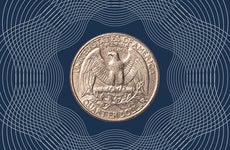Half of Americans say their personal finances have gotten worse since 2020. Is relief on the way in 2024?

The Bankrate promise
At Bankrate we strive to help you make smarter financial decisions. While we adhere to strict , this post may contain references to products from our partners. Here's an explanation for .
Raquel Alfaro graduated from college in 2019 with big expectations: She’d quickly get a job related to her journalism degree, buy a house and be financially independent. She hadn’t expected to be routinely ghosted by recruiters, struggle with her mental health or lose her first post-grad job during COVID-19.
Now 26, Alfaro lives with her family in Maryland, working as a customer affairs specialist and taking side jobs walking dogs. Between her car payment and gas for her hour-and-a-half commute, groceries, debt repayment and other expenses, she can’t afford to get an apartment in the area, where a one-bedroom apartment is the cost of an entire paycheck.
It’s not the future she had in mind for herself.
“At 26, I thought I’d be more financially stable. That’s the narrative people want to put out there,” Alfaro says. “Right now, I don’t feel like that. I still feel like I’m figuring out my life and figuring out my financial situation.”
Alfaro is one of millions of Americans who feel their personal financial situation has gotten worse since 2020. After inflation, high interest rates, unattainable housing prices and other economic factors, 50 percent of U.S. adults say their overall personal financial situation is worse than it was in November 2020, according to October 2023 Bankrate polling. As the 2024 presidential election approaches, 89 percent of Americans say the economy will be very important or somewhat important in their vote.
Despite months of recession fears, nationwide metrics now show the U.S. economy is actually growing. However, while wages are strong and unemployment is low, many Americans still feel inflation is too high to comfortably afford necessities.
Here’s how the broader financial landscape has affected Americans’ wallets since 2020.
There are two U.S. economies: the one experts study, and the one Americans experience. On paper, the U.S. economy looks strong, but that doesn't mean Americans feel like they're climbing ahead.— Sarah Foster | Bankrate U.S. Economy Reporter
Key economic indicators from Bankrate polling
- The U.S. isn’t in a recession, but many Americans feel like it is. 59% of U.S. adults feel like the economy is in a recession, with 31% strongly agreeing, as of October 2023.
- Americans are more likely to say the economy has impacted their finances if they feel there’s a recession. 66% of Americans say the economic environment has negatively impacted their finances, as of October 2023. That figure rises to 85% for Americans who believe the economy is in a recession.
- Cost of living is a significant pain point for most Americans. 69% of Americans say their cost of living has gotten worse between November 2020 and October 2023, according to a separate report. 42% say their short-term savings have gotten worse; 34% say their investments (including retirement savings) have gotten worse and 18% say their careers have gotten worse.
- Nearly a quarter don’t have emergency savings. Only 48% of Americans have enough emergency savings to cover at least three months’ worth of expenses, as of May 2023. 22% have no emergency savings at all.
- Americans’ debt is piling up. 36% of U.S. adults have more credit card debt than emergency savings, as of January 2023, the highest percentage since 2011.
- Concerns over job security add additional financial stress. 33% of American workers were worried about their job security, as of April 2023.
Consumer confidence about the US economy has fallen significantly since 2020
On a scale between 1 and 10, Alfaro would rate her personal finances at a 3 — that is, she doesn’t feel very confident about them at all.
“Even a higher salary just means you’re getting paid more to pay your bills and catch up at this point. Maybe I would have a little bit of wiggle room, but I’m saying that lightly, because prices continue to increase on everything,” Alfaro says.
Alfaro isn’t the only person who feels pessimistic about their finances. Consumer confidence, a metric tracked by the University of Michigan that indexes consumer attitudes and expectations about the economy, is down 11 percentage points (80.7 to 69.7) between December 2020 and December 2023, the latest month available. The index soared to 78.8 in the first preliminary results for January 2024, the highest it’s been since July 2021, according to the University of Michigan.
But consumer confidence still hasn’t caught up to 2020, even though that was the first year of COVID-19.
Tuan Nguyen, an economist with the tax firm RSM US, says this is the lowest consumer confidence since the 2008 financial crisis, and it affects lower-income families worse than higher-income families. Consumer confidence fell 18 percentage points (from 75.1 to 57.1) between November 2020 and November 2023 for families who make under $100,000 a year. In comparison, consumer confidence only fell 12 percentage points (from 79.2 to 67.3) for families with incomes over $100,000 in the same time period.
Consumer confidence index by family income level, from November 2020 to November 2023
| Year | Families with incomes under $100,000 | Families with incomes over $100,000 |
|---|---|---|
|
Source: University of Michigan Note: Income data is not available yet for December 2023 |
||
| November 2020 | 75.1 | 79.2 |
| November 2021 | 62.8 | 73.9 |
| November 2022 | 59.3 | 53.6 |
| November 2023 | 57.1 | 67.2 |
“For consumers who are in the lower income brackets, they have been struggling with inflation and with the low amount of savings,” Nguyen says. “The kind of low (consumer) confidence and low level of sentiment that we have seen in the past two, three years have been quite extraordinary.”
While the inflation rate is down since 2022, interest rates are at a record high
Inflation has had a massive impact on consumer confidence, and though it’s higher than it was in 2020, inflation has improved recently. The inflation rate is now 3.4 percent as of December 2023, according to the latest data available from the Bureau of Labor Statistics (BLS). This is an improvement from December 2022, when it was 6.4 percent:
- December 2020: 1.3 percent
- December 2021: 7.2 percent
- December 2022: 6.4 percent
- December 2023: 3.4 percent
Inflation is now the lowest it’s been in the past few years, but Americans aren’t out of the financial woods yet. To combat high inflation, the Federal Reserve steadily rose interest rates in 2022. After 11 rate hikes, interest rates are now in a target range of 5.25-5.5 percent, the highest they’ve been in decades.
It’s an astronomical interest rate compared to 2020, when the Fed cut rates to 0-0.25 percent due to COVID-19. The Fed lowers rates to give the U.S. economy a boost during recessions and raises them to clamp down on price pressures. The Fed’s rate decisions hit almost every corner of Americans’ financial situation: Higher rates now mean Americans are paying far more for mortgages, credit card debt, car loans and other loans than they might have paid in the past.
Case in point: The average 30-year fixed rate mortgage is 7.23 percent, up from 3 percent in 2020:
Interest rates, December 2020 to December 2023
| Year | Federal funds effective rate¹ | 30-year fixed rate mortgage average² |
|---|---|---|
|
Source: Federal Reserve, Bankrate 1: Data reflects midpoint of federal funds rate. 2: Percentages are recorded multiple times a month, data is from the earliest date in December that data is available. |
||
| December 2020 | 0.125% | 3.00% |
| December 2021 | 0.125% | 3.19% |
| December 2022 | 4.375% | 6.62% |
| December 2023 | 5.375% | 7.23% |
“The clear difference between today and November 2020 is inflation,” Bankrate U.S. Economy Reporter Sarah Foster says. “Prices are not climbing as quickly as they once were, but they’ve not retreated to pre-pandemic levels, either — and they likely never will. Then, like a one-two punch, the Federal Reserve began raising interest rates to quell inflation. The pain has been felt before the gain.”
Despite lower inflation, it’s still difficult for many to afford necessities
Americans like Alfaro can be made painfully aware of the impact of inflation as prices of food, energy, gasoline and other common goods haven’t risen equally compared to pay.
Her monthly paycheck, after taxes, is about $3,500, and she makes a few extra hundred dollars a month from dog sitting. After buying groceries for her family and paying for car expenses, including up to $200 a month on gas, she doesn’t have much left over. She also doesn’t have the budget to spend money on self-care expenses that would have helped her mental health in the past.
“I feel like it sounds so minimal, like, oh, this girl’s complaining about getting her nails done. But no, everything has increased,” Alfaro says. “The (cost of) vets have gone up, doctor’s appointments and copays have gone up. … It didn’t used to be like that before.”
Employers aren’t required by law to raise their wages due to inflation, but nevertheless, wages increased more than they had in more than 20 years. The average hourly earnings for private employees rose 15 percent between December 2020 and December 2023, according to the BLS (from $29.92 an hour to $34.27 an hour). But despite rising wages, some goods and services have grown more expensive than people’s paychecks can keep up with.
“Inflation is like taking a pay cut. Workers have said in two years of Bankrate surveys that, more likely than not, their incomes have not kept pace with inflation, even when they did earn a raise or take advantage of the red-hot economy,” Foster says. “It’s fair to say that financial progress for many feels stagnant, akin to walking on a treadmill or climbing up on a down escalator.”
New job numbers and wage growth could be a source of optimism for many Americans
Despite the financial impact of inflation and high interest rates, Foster says there is a lot to feel optimistic about in regard to the economy. The number of Americans in their prime working age who are either employed or looking for work hit a 20-year high; businesses have record demand for workers; employee pay is rising fast and on paper, the U.S. economy is strong.
“We’re in a place now where wages are finally climbing faster than inflation, but there’s still ground to recover,” Foster says. “Whether Americans end up feeling better about the economy and freed from the impacts of inflation ultimately depends on whether the U.S. economy keeps kicking a recession down the road.”
This is especially true for lower-wage workers, whose pay soared in the past three years.
Between 2019 and 2022, the lowest-wage American workers (those in the 10th percentile of wages) saw their hourly wages grow 9 percent, adjusted for inflation, according to the Economic Policy Institute (EPI), more than any other income bracket. The highest-wage workers’ earnings only grew around half as much:
- 10th percentile of wages: 9 percent
- Average of 20th-40th percentile: 3.9 percent
- Average of 40th-60th percentile: 2.4 percent
- Average of 60th-80th percentile: 1.8 percent
- 90th percentile of wages: 4.9 percent
This is a major reversal of fortunes for lower-income Americans compared to the past several decades. Wage growth, adjusted for inflation, remained stubbornly low between 1989 and 2010, according to the EPI, and actually fell significantly between 1979 and 1982:
- 1979-1982: -11.8 percent
- 1989-1992: 3.1 percent
- 2001-2004: 0.8 percent
- 2007-2010: 1.1 percent
- 2019-2022: 9 percent
COVID-19 led to significant changes in bargaining power among lower-wage workers. Employers cut millions of low-wage jobs during COVID-19-related lockdowns, but when hiring began again, workers looked for better-paying positions, according to the EPI. As the job market recovered, companies saw soaring job vacancies and turnover. To keep workers, companies like T-Mobile, Amazon and Walmart raised wages to as high as $20 an hour.
Unemployment is still low — it’s hovered below 4 percent since 2021, according to the BLS, the longest stretch of unemployment that low since the 1960s. The unemployment rate in November 2020 was 6.7 percent after COVID-19-related layoffs and business closures earlier that year, but as of December 2023, the unemployment rate was only 3.7 percent.
What’s next?
In the coming years, Foster says the biggest elephant in the room will be what happens with the economy. Economists predicted a recession through 2023 — a prediction that didn’t come to pass. While that doesn’t rule out a recession in 2024, it does point to a possibility of upcoming economic stability.
“Will the financial system keep expanding, or will it ultimately contract in a recession?” Foster says. “Economists have been warning about a recession for a year and a half now, and it’s so far been yet to materialize. But like a warm December day before the winter’s first snow, that bad weather will show up. It’s inevitable. The question is just, ‘When?’”
4 steps to better understand your financial situation
So many figures paint someone’s entire financial picture that it’s understandable if you’re not completely aware of where you stand. But understanding where you are financially not only helps you understand your finances now, but will help you make better decisions in the future. These are key figures to know to understand your financial situation.
1. Take stock of your income and expenses
If you don’t have a budget, consider this your reminder to make one. If you do have a budget, but you haven’t looked at it in a while, this is the time to update your budget with your latest subscriptions, bills or any change in income. Create a list of all of your income streams and expenses to understand how money is entering and leaving your accounts. It’s hard to make financial decisions without knowing how much money is in your account.
2. Understand your assets
Part of understanding your net worth is understanding what assets you have, but it isn’t always clear what an asset is. Assets are anything tangible or intangible that can hold, grow or lose value. If you can sell it, it’s probably an asset. That includes cash, bank accounts (checking and savings), real estate, vehicles, collectibles, patents, copyrights and trademarks. Assets allow you to understand your net worth and let you know how much borrowing power you have.
3. Know your interest rates
If you have debt, do you know your interest rate? Nearly half (43 percent) of people with credit card balances they carry month to month don’t know the annual percentage rates (APR) of their cards, according to a January 2023 Bankrate study. The interest rate on your credit card or loan will dictate how much you end up paying over time — it could be much more than the initial loan. If you’re carrying a balance on a credit card that you opened in the last year and you haven’t paid interest yet on it, be sure to check if it has zero interest due to a promotional offer. You don’t want to be surprised by a hefty interest payment down the line.
4. Create goals
Building good financial habits is a work in progress. Celebrate how far you’ve come, and make goals for the future. Do you want to pay off debt as soon as possible to improve your credit score? Save for a new car or a down payment on a house? A goal gives you the motivation you might need to get the gears running and pay down debt or save.
Related Articles

Survey: Majority of Americans don’t expect their finances to improve in 2019

Survey: 43% of Americans say their finances have gotten worse under Biden

Just 38% of Americans say their finances have improved since the 2016 election

Survey: 43% of Americans think their financial situation will get better in 2020